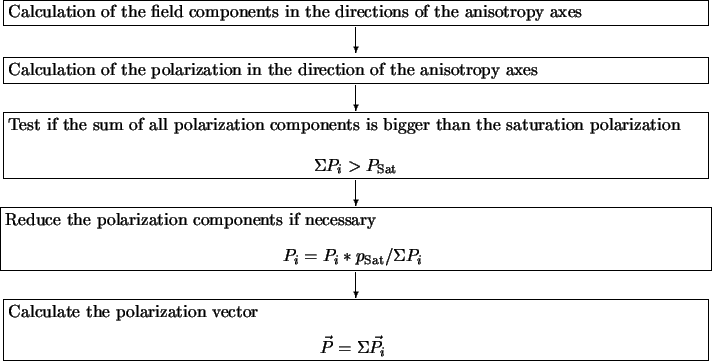



Next: 4.2.5 Algorithm for Materials
Up: 4.2.4 Algorithm for Anisotropic
Previous: 4.2.4.1 Uniaxial Materials
Contents
Simulation of more than one anisotropy axis requires a sophisticated
simulation approach. As outlined above, the dipoles have to be
oriented in the axes directions, but they are not bound to a
particular direction. This means that transitions between all of the
four states outlined in Fig. 4.2 and Fig. 4.3 are possible.
Nevertheless it has to be taken into consideration that the number of dipoles is
finite, which sets a hard limit to the sum of the polarization
components of all the axes directions. When this limit is reached, the
polarization components have to be reduced correspondingly. This is done
following the ratio between the polarizations in the respective
directions. The implemented algorithm is outlined in Fig. 4.7.
Figure 4.7:
Algorithm for materials with more than one axis of anisotropy
 |
Klaus Dragosits
2001-02-27
